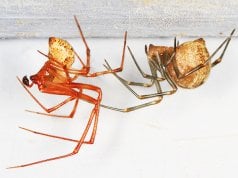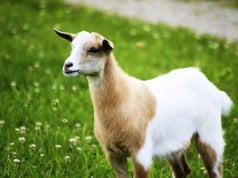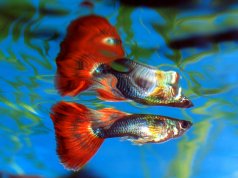The Remarkable Guinea Fowl: A Comprehensive Guide
Often described as living alarm clocks of the African savanna, Guinea fowl are birds steeped in history, ecology, and cultural significance. These striking birds, not commonly associated with domestic poultry despite their name, possess a unique blend of characteristics that set them apart. This guide delves into the fascinating world of Guinea fowl, exploring their natural history, behavior, and interactions with both the environment and humankind.

What Exactly Is a Guinea Fowl?
The term “Guinea fowl” doesn’t refer to a single species, but rather to a group of several species of ground dwelling, seed and insect eating birds in the Numididae family. There are six distinct species, most prominently the Helmeted Guinea fowl (Numida meleagris), the Pearl Guinea fowl (Numida meleagris), and the Crested Guinea fowl (Guttera edouardi). They are native to Africa, with the Helmeted Guinea fowl being the most widespread, found across much of sub Saharan Africa. While often farmed, they remain fundamentally wild birds, retaining many of the behaviors and characteristics of their ancestral origins.
A Glimpse into Guinea Fowl Evolution and Habitat
The evolutionary history of Guinea fowl is a story of adaptation to the diverse African landscapes. Their origins trace back to the early Cenozoic era, with fossil evidence suggesting their ancestors inhabited forested regions. Over millions of years, they diversified and spread, colonizing grasslands, savannas, and even semi desert areas. This adaptation is reflected in their robust build, strong legs for running, and ability to thrive in varying climates.
Guinea fowl prefer open woodlands, grasslands, and savannas. They require areas with scattered trees or shrubs for roosting and nesting, but spend most of their time foraging in open areas. They can be found at elevations ranging from sea level to over 9,000 feet, demonstrating their adaptability. Their distribution is largely dictated by the availability of suitable habitat and water sources.
Diet and Foraging Behavior
Guinea fowl are opportunistic omnivores, with a diet that varies depending on the season and availability of food. Seeds, grains, berries, roots, insects, snails, lizards, and even small rodents are all fair game. They are renowned for their ability to control insect populations, making them valuable allies to farmers. They forage in groups, scratching at the soil with their strong feet to uncover hidden treats. This behavior aerates the soil and helps disperse seeds, contributing to ecosystem health.
What do Guinea Fowl Eat Specifically?
While a varied diet is typical, specific preferences exist. During the wet season, insects form a substantial portion of their diet, providing essential protein. In the dry season, seeds and tubers become more important. They are also known to consume fallen fruit and agricultural crops, occasionally bringing them into conflict with farmers. Their strong bills are perfectly adapted for cracking seeds and digging for roots.
Mating, Reproduction, and Raising Young
Guinea fowl exhibit a unique mating system. Males perform elaborate displays, including chasing, wing flapping, and vocalizations, to attract females. While polygynous (males mating with multiple females) is common, pair bonds can form, with the male assisting in raising the young. Nesting typically occurs on the ground, in concealed locations amongst vegetation. The female lays a clutch of 6 to 12 eggs, which are incubated for approximately 26 to 28 days.
Chick Development and Parental Care
Guinea fowl chicks are precocial, meaning they are relatively independent from hatching. They are covered in downy feathers and can walk and feed themselves within hours. However, they rely on their parents for protection from predators. The parents lead the chicks to foraging areas and fiercely defend them from threats. Young guinea fowl, known as keets, reach sexual maturity at around 9 to 12 months of age.
Ecological Role and Interactions with Other Animals
Guinea fowl play a crucial role in maintaining ecosystem health. As seed dispersers, they contribute to plant diversity. Their insectivorous habits help control pest populations, benefiting both natural ecosystems and agriculture. They also serve as a food source for various predators, including raptors, jackals, and snakes. Their loud calls often alert other animals to the presence of danger, making them effective sentinels of the savanna.
Coexistence and Competition
Guinea fowl often coexist peacefully with other grazing animals, such as zebras and wildebeest. They benefit from the increased visibility afforded by these larger animals, reducing their risk of predation. However, they can compete with other ground foraging birds, like francolins and spurfowl, for food resources. They are also known to follow larger herbivores, scavenging for insects disturbed by their movements.
Guinea Fowl and Humans: A Longstanding Relationship
The relationship between humans and Guinea fowl dates back centuries. In many African cultures, Guinea fowl are traditionally raised for meat and eggs. They are also valued for their role as natural pest control agents and as indicators of environmental health. Their feathers are sometimes used for decoration and ceremonial purposes. Furthermore, Guinea fowl have been introduced to other parts of the world, including Europe and the Americas, where they are raised commercially and kept as ornamental birds.
Farming and Domestication
While not fully domesticated like chickens, Guinea fowl are relatively easy to raise in captivity. They are hardy, disease resistant, and require minimal care. They thrive in free range systems, foraging for much of their food. However, they can be noisy and prone to wandering, requiring secure fencing. Their meat is leaner and slightly gamier than chicken, and their eggs are richer in flavor.
Encountering Guinea Fowl in the Wild: A Guide
If you are lucky enough to encounter Guinea fowl in their natural habitat, observe them from a respectful distance. Avoid approaching them closely, as this may cause them to become stressed. They are typically wary of humans and will quickly flee if disturbed. Listen for their distinctive, loud calls, which often signal their presence. If you are hiking in Guinea fowl habitat, be aware that they may suddenly take flight, so scan the area carefully.
Caring for Guinea Fowl in Captivity: A Zookeeper’s Guide
Providing appropriate care for Guinea fowl in a zoological setting requires understanding their natural behaviors and needs. Spacious enclosures with a mix of open areas and vegetation are essential. Provide a varied diet consisting of seeds, grains, insects, and greens. Ensure access to clean water at all times. Regular health checks and parasite control are crucial. Provide enrichment activities, such as foraging toys and dust bathing areas, to stimulate their natural behaviors. Avoid overcrowding, as this can lead to stress and aggression.
Fascinating Guinea Fowl Facts
- Guinea fowl can run at speeds of up to 35 miles per hour.
- They have a distinctive casque, or helmet, on their head, which is thought to provide protection during fights.
- Guinea fowl are renowned for their loud, piercing calls, which can be heard from a considerable distance.
- They are excellent fliers, capable of sustained flight over long distances.
- Guinea fowl are highly social birds, typically living in flocks of 10 to 30 individuals.
- They are relatively resistant to many common poultry diseases.
In conclusion, Guinea fowl are remarkable birds with a rich history, complex ecology, and unique set of characteristics. From their vital role in maintaining ecosystem health to their longstanding relationship with humans, they continue to fascinate and inspire. Their resilience, adaptability, and distinctive personality make them a truly special member of the avian world.






![Red Angus Closeup of a beautiful Red Angus cowPhoto by: U.S. Department of Agriculture [pubic domain]https://creativecommons.org/licenses/by/2.0/](https://animals.net/wp-content/uploads/2020/03/Red-Angus-4-100x75.jpg)

